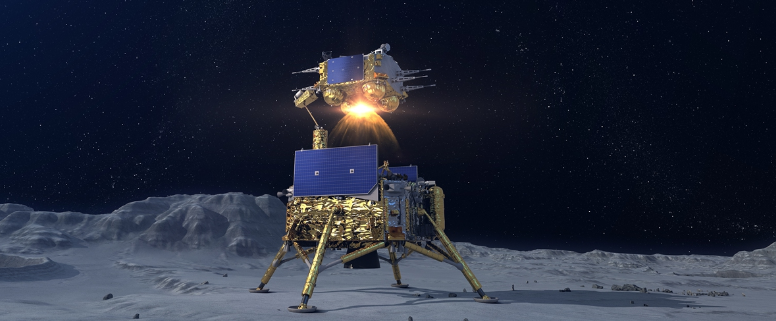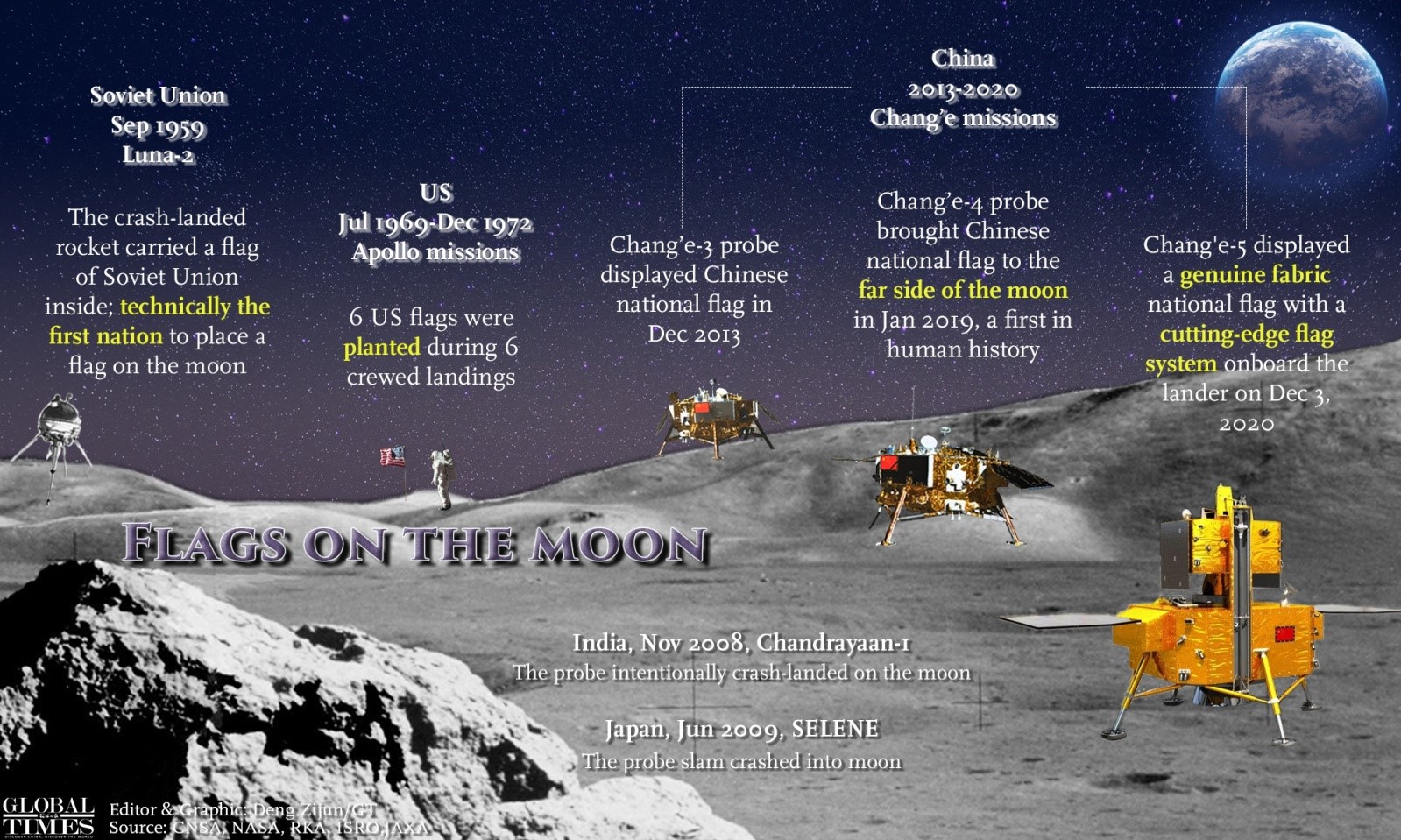CHANG’E-5 LUNAR MISSION

Disclaimer: No Copyright infringement intended.
Context
- On December 16, 2020, China’s Chang’e-5 lunar mission delivered to Earth nearly 2 kg of rocky fragments and dust from the Moon.
- The team has modelled the potential contributions from specific craters: Aristarchus, Kepler, Copernicus, Harding, and Harpalus.
- Now, scientists presented the early-stage findings that use geological mapping to link ‘exotic’ fragments in the collected samples to features near the landing site.
About Chang'e 5
- It is the fifth lunar exploration mission of the Chinese Lunar Exploration Program, and China's first lunar sample-return mission.
- The mission comprised of a lunar orbiter, a lander and an ascent probe that lifted the lunar samples back into orbit and returned them back to Earth.
- The Chang'e 5 landing site is in the Northern Oceanus Procellarum near a huge volcanic complex, Mons Rümker, located in the northwest lunar near side.
- The Chang'e 5 landing site, named Statio Tianchuan, is within the Procellarum KREEP Terrain, with elevated heat-producing elements, thin crust, and prolonged volcanism.
- This area is characterized by some of the youngest mare basalts on the Moon (~1.21 billion years old), with elevated titanium, thorium, and olivine abundances, which have never been sampled by Apollo or Luna mission.
- Chang'e-5 will help scientists understand what was happening late in the moon's history, as well as how Earth and the solar system evolved.
The Findings
- 90% of the materials collected by Chang’e-5 likely derive from the landing site and its immediate surroundings, which are of a type termed ‘mare basalts’.
- These volcanic rocks are visible to us as the darker grey areas that spilled over much of the nearside of the Moon as ancient eruptions of lava.
- Yet 10% percent of the fragments have distinctly different, ‘exotic’ chemical compositions.
- Scientists have traced these glassy droplets to extinct volcanic vents known as ‘Rima Mairan’ and ‘Rima Sharp’.
Significance
- The distinct 10% fragments may preserve records of other parts of the lunar surface as well as hints of the types of space rocks that have impacted the Moon’s surface.
- These fragments could give insights into past episodes of energetic, fountain-like volcanic activity on the Moon.




1.png)
